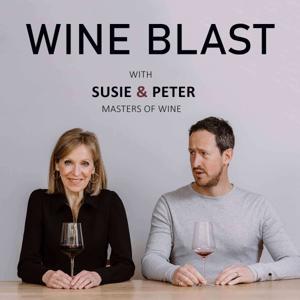With a large domestic market for wine, US producers often don’t focus a lot on exports. Honore Comfort, VP of International Marketing for Wine Institute, lays out the benefits and challenges of exporting wines globally. She covers the top markets for US wine globally, the role Wine Institute plays in helping US exports, and the potential impacts of the current trade war.
Detailed Show Notes:
Wine Institute overview
- Members are CA wineries (>1,000)
- Public policy organization focused on legislation (e.g., DTC shipping)
- Member dues are a sliding scale (based on prior year revenue & volume), baseline is a few hundred dollars
CA is the 4th largest wine region in the world after France, Italy, and Spain
- Largest market in the US
- The US market is 75% domestic (80% from CA), 25% imports
- Export is 4% (by value), 95% is CA
- Traditionally lower-priced wines, now a barbell (both low and high, but not mid-priced wines)
- Other countries have high taxes, duties, and tariffs on imported wines (int’l pricing often 2-3x US retail, 10x for India)
Cost to produce is high in CA (heavily regulated - environmental & labor force protections; land costs high)
Goal to showcase the diversity of CA wine globally, but only a sliver is available
Key int’l markets - Canada (#1 until Feb 2025; ~30% of US exports - premiers took all wine off shelves as part of trade war); Europe #2 (Germany is hard w/ strong domestic, low priced market; Scandinavia big); UK #3 (punches above its weight as oldest wine market, lots of wine writers, critics, traders; one of the broadest selections of CA wine); China, Japan, Korea, Mexico
Wine Institute has active programs in >30 countries for CA wines
Benefits of exporting wine: importers sell wine for you (no 3-tier system like the US), build brand visibility, position wines next to other great wines of the world
Challenges of exporting wine - takes investment, needs face-to-face storytelling
Small Napa producer (<5k cases) now exports 15% of sales working w/ Wine Institute
IWSR creates an index ranking all wine markets globally on attractiveness (2024 - US #1, Canada #2, Switzerland #3 - a small country, but strong wine culture and high value wines)
EU subsidies are pervasive (e.g., bottling line, materials subsidies, marketing support (Italy $150M/year), buying excess bulk wine), but hard to get complete info
The US has less support for alcohol (USDA has $8M/year for CA wine); wine is the highest value US export, but low in total value
Trade war impacts
- Market uncertainty has many importers not wanting shipments on the water
- Cost of input materials (e.g., steel, oak barrels) up
- Prior administration not interested in addressing trade disparities, potential to open up other markets (e.g., India - 150% tariff on alcohol, #1 whiskey market, #5 beer market; Vietnam; Thailand)
- Attitudes towards the US impact business (e.g., Denmark dislikes threats on Greenland, reducing US purchases; China is not a factor; Vietnam and Korea are positive on US products)
- Hong Kong’s move to 0% taxes on wine led it to be a hub of CA wine in Asia
- In 2019, China's tariffs on US wine plummeted business
Wine Institute promotes “0 for 0 tariffs” - keeping wine out of trade disputes
Major policy priorities: US dietary guidelines (on alcohol), getting wine back on the shelf in Canada, Ingredient & nutritional labeling, CA bottle bill on recycled glass, and environmental regulations
“Share Wine” program - building understanding, community, and engaging with wine consumers, focusing on 25-45 year olds, centering on relationship w/ technology
Hosted on Acast. See acast.com/privacy for more information.




































